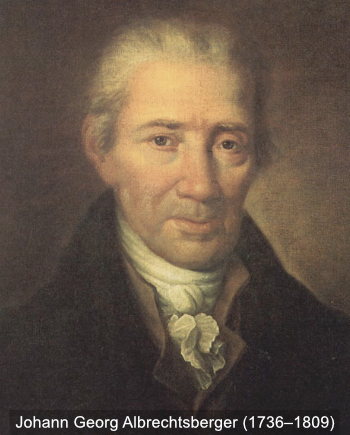
18th-Century Counterpoint with Paul Dell Aquila
Assigned Reading, Homework Schedule, and Class Agenda (PDF)
Semester Topics
Introduction to Eighteenth-Century Counterpoint
Historical Perspective
The Nature of Counterpoint
Strict versus Free Counterpoint
The Single Melodic Line
Phrases and Cadences
Periodic Phrases and Fortspinnung
Melodic Contour
Structural and Less Structural Notes and Events
Harmonic Backgrounds
Compound Line
Principles of Two-Voice Counterpoint
Quality of Individual Lines
Independence and Unity Between Lines
Harmonic Backgrounds
Cadences
Consonance versus Dissonance
Two-Voice Species Counterpoint Exercises
Note against Note (1:1)
Two Notes against One (2:1)
Nonharmonic Tones
Placement of Harmonic and Nonharmonic Tones
Parallelism in 1:1 and 2:1 Counterpoint
Chromaticism in Two Voices
Essential and Nonessential Tones
Secondary Functions
Modulation
Mode Mixture
Cross Relations
Other Two-Voice Species Exercises
Three Notes against One (3:1)
Four Notes against One (4:1)
Syncopation (Fourth Species)
Suspensions
The Anticipation
Tied and Repeated Tones
Fifth Species
Dividing Rhythmic Activity between Voices
Two-Voice Binary Form Pieces
Form and Structure
Repetition, Variation, and Contrast
Addition and Subtraction of Voice Parts
Imitative Counterpoint
Imitation at the Octave
Imitation at other Harmonic Intervals
Canon
Technique for Writing Canons
Special Canonic Devices
Contrary Motion
Augmentation and Diminution
Retrograde Motion
The Accompanied Canon
Writing Perpetual Canons and Rounds
Invertible Counterpoint
Invertible Counterpoint at the Octave
Invertible Counterpoint at other Harmonic Intervals
The Two-Part Invention
Motive, Countermotive, and Imitation
Episodes, Middle Entries, and Final Statements
Invention Construction and Formal Structure
Three-Voice Counterpoint
Rhythmic Relationships in Three Voices
Relative Importance of Voices
Harmonic Considerations
Chromaticism
Converting 1:1 Three-Voice Exercises to other Species Patterns
Imitation in Three Voices
Writing Three-Voice Pieces
Three-Voice Preludes
Three-Voice Periodic Dance Movements
The Three-Part Invention (Sinfonia)
The Trio Sonata
Baroque Duo Sonatas
The Chorale Prelude
Types of Chorale Preludes
Writing a Three-Voice Chorale Prelude
Fugue
The Fugue Subject and Answer
Three- and Four-Voice Fugues
The Fugue Exposition
Episodes, Middle Entries, and Final Statements
Stretto
The Counterexposition
Fugue Construction and Formal Structure
Assigned Reading, Homework Schedule, and Class Agenda (PDF)
